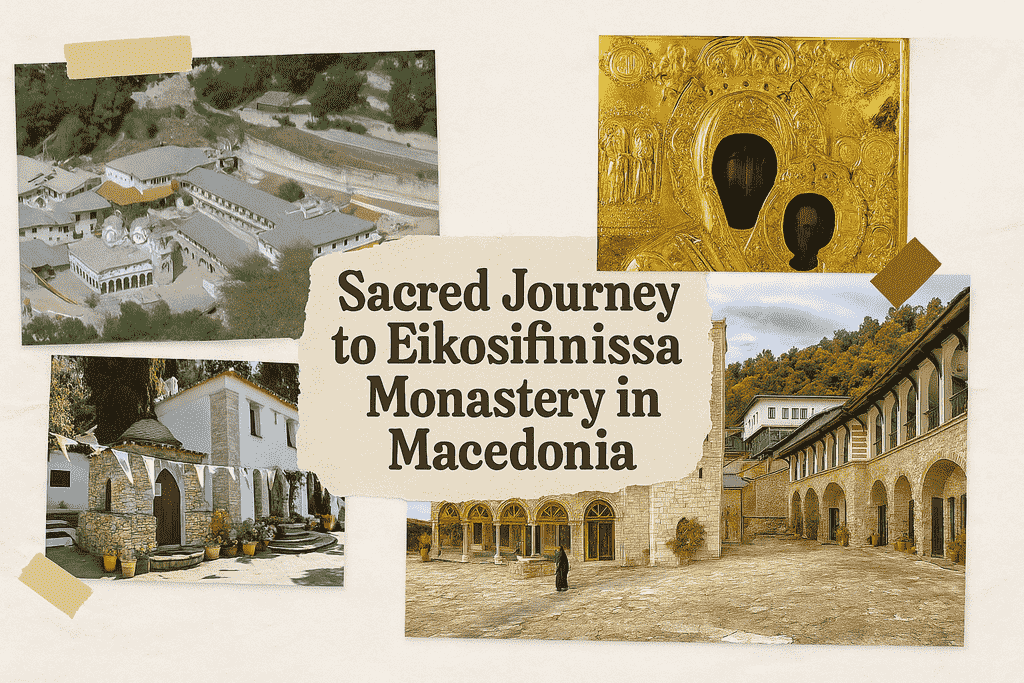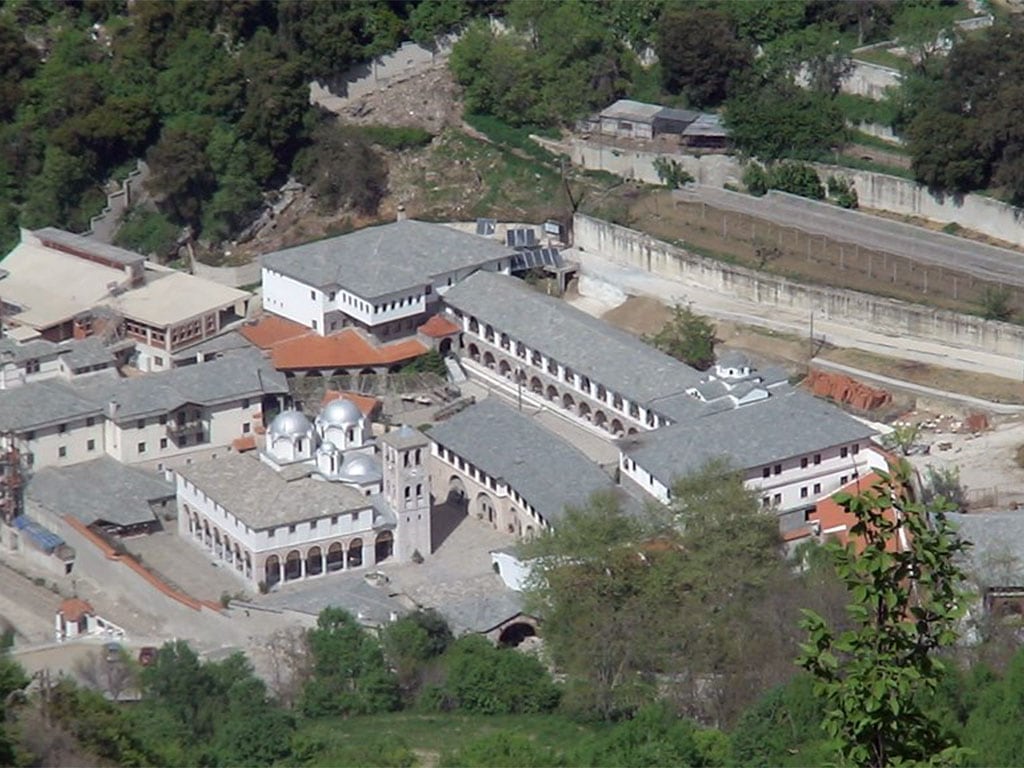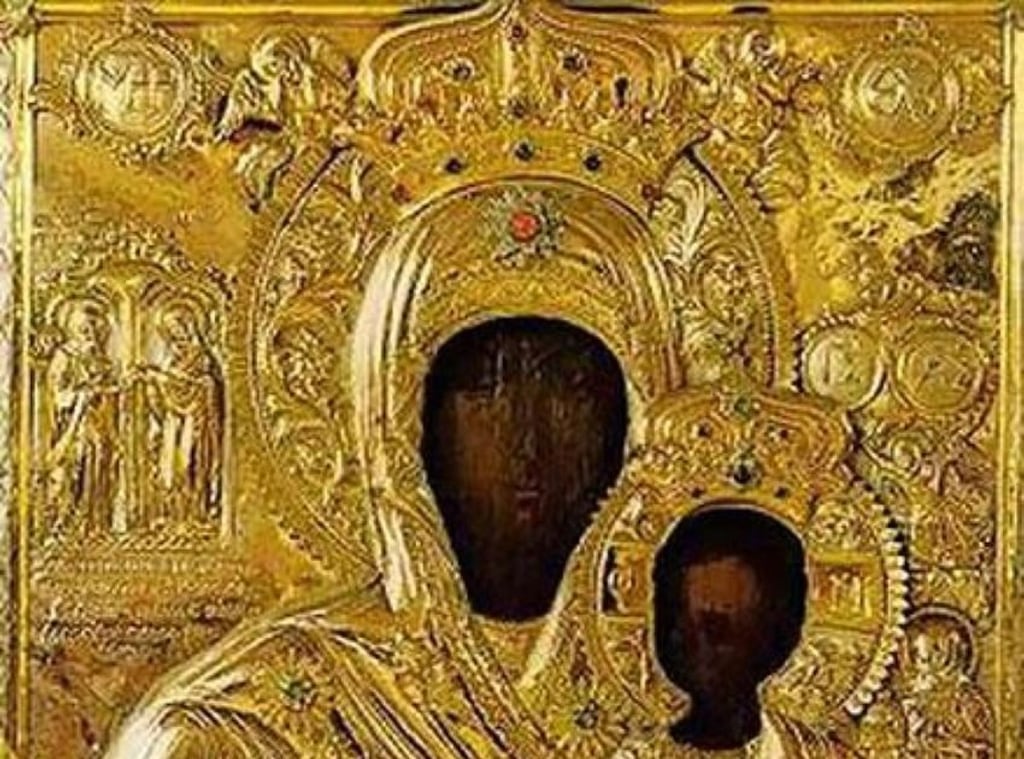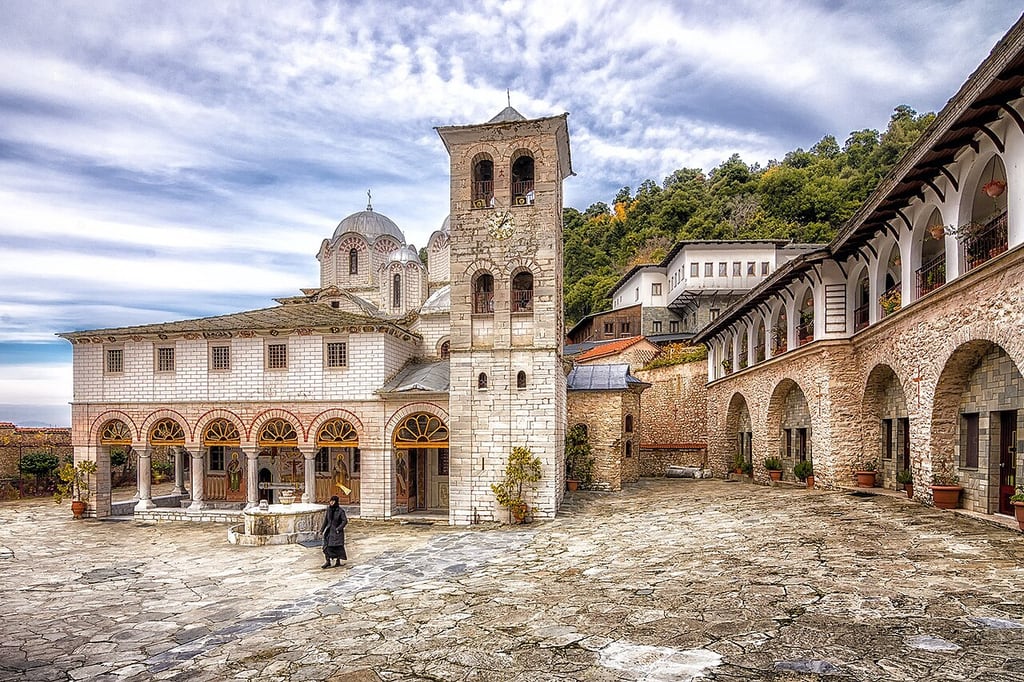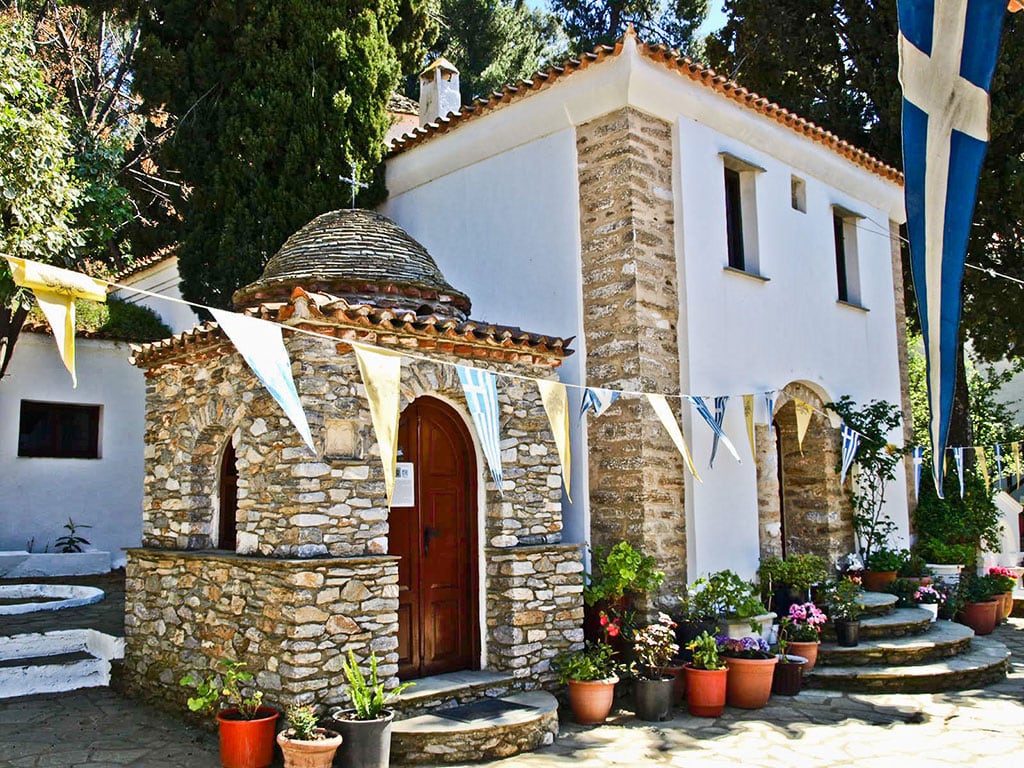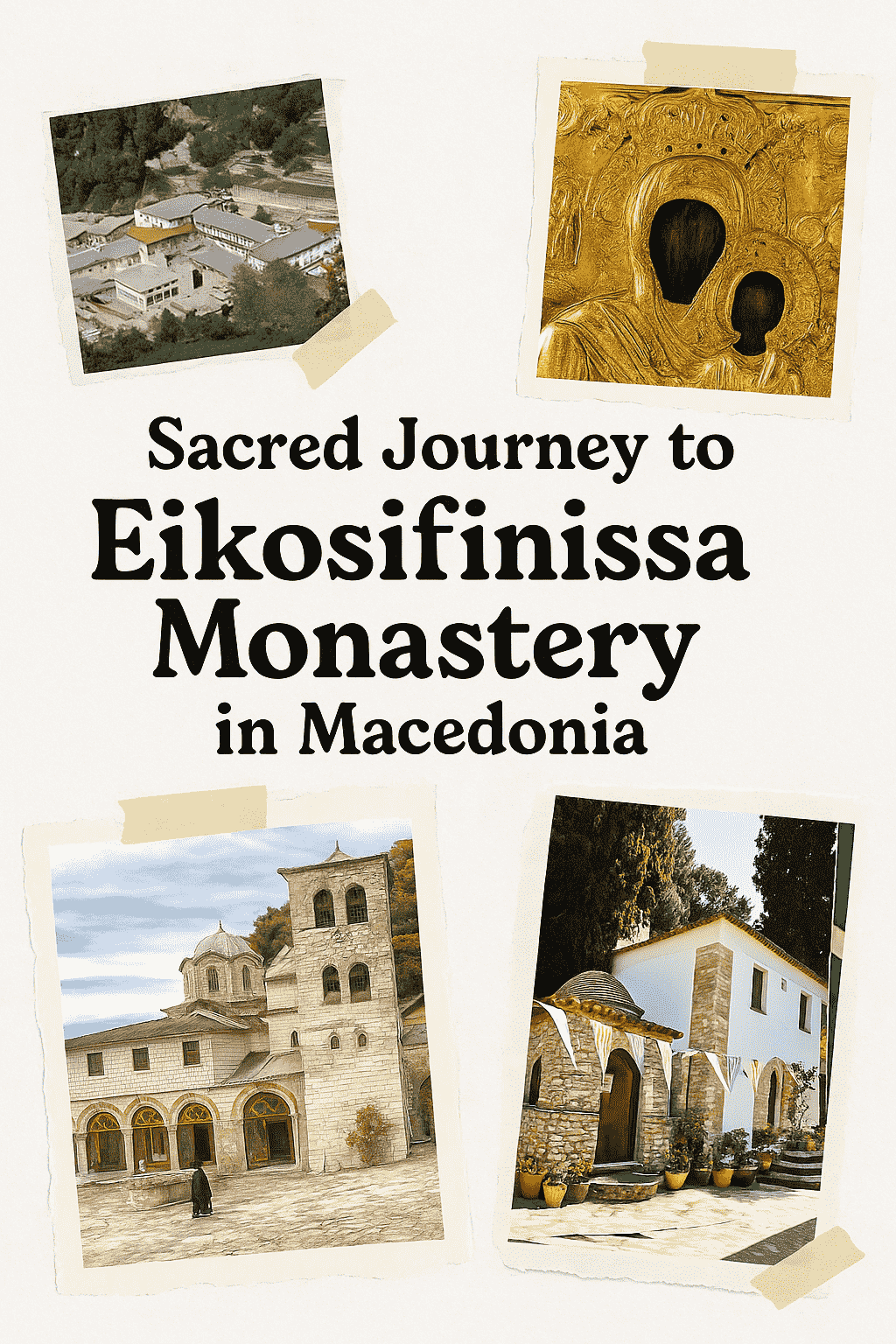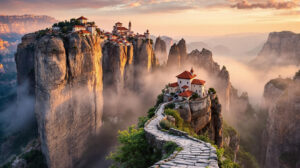Sacred Journey to Eikosifinissa Monastery in Macedonia
Deep in the green hills of Northern Greece, near the border with Bulgaria, there lies a place of calm, beauty, and deep spiritual roots. The Eikosifinissa Monastery is one of the most important and oldest monasteries in the Orthodox world. It’s not just a religious site but also a powerful experience for travelers who want to go beyond tourist routes. This place offers a unique blend of history, spirituality, and natural peace that’s hard to find elsewhere.
Where Exactly Is Eikosifinissa?
The monastery is located on Mount Pangaion in the region of Eastern Macedonia and Thrace. It belongs to the Drama regional unit. The closest towns are Serres and Drama. You won’t find large tourist buses or souvenir shops here. The road climbs gently through forests and narrow rural paths. At the end of the journey, you’re met with stone walls, cypress trees, and a view that feels untouched by modern life.
What Does Eikosifinissa Mean?
The name “Eikosifinissa” might sound complicated at first. In Greek, it’s spelled Εικοσιφοίνισσα. One interpretation of the name links it to “twenty palm trees” or “twenty phoenixes.” Others say it’s named after a miraculous icon found at the site. Whether you believe the legend or not, the spiritual energy of the place is undeniable. Many pilgrims walk here on foot, and even people with no religious background speak of a sense of peace that comes over them upon arrival.
A History That Goes Back Over 1500 Years
Eikosifinissa has an incredible history. It is believed to have been founded in the 5th century by Saint Germanos of Constantinople. Over the centuries, the monastery became a major spiritual and cultural center in the Balkans. It survived invasions, fires, and political upheaval. During the Ottoman period, it even served as a refuge for monks and scholars. The printing press that operated here was one of the first in the region. Its manuscripts are now considered national treasures. In more recent history, the monastery was burned during the Bulgarian occupation in World War II. It was later rebuilt with care and love. Today, it operates as a convent for nuns who keep the traditions alive.
The Architecture and Atmosphere
Once you step through the gates, the atmosphere changes. The walls are made of local stone, and the buildings follow Byzantine lines. You’ll see domed roofs, narrow arched windows, and icons painted in deep reds and golds. The main church is small but powerful. Candles flicker inside, and the scent of incense floats through the air. The courtyard is filled with flowers, and cats lounge in the sun. It’s silent except for the wind and the occasional church bell. There’s no sense of hurry here. Every corner feels sacred, even the stones under your feet.
The Miraculous Icon
One of the monastery’s greatest treasures is the icon of the Virgin Mary. Many believe it has healing powers. Pilgrims travel long distances to light a candle and say a prayer before it. The icon is kept in a beautifully carved wooden frame. During important religious feasts, it is carried in processions that draw visitors from all over the Orthodox world. If you visit during one of these events, you’ll witness an incredible mixture of ancient rites, chants, and local traditions.
How to Get There
Getting to Eikosifinissa is not difficult but does require a bit of planning. If you’re flying in, the nearest airport is in Kavala or Thessaloniki. From either city, you can rent a car and drive towards Drama or Serres. The drive is about 1.5 to 2 hours from either city. Public buses go to the nearby towns, but you’ll still need a car or taxi to reach the monastery itself. The last part of the road is narrow but paved. Parking is available near the entrance.
Best Time to Visit
The monastery is open year-round, but spring and early autumn are ideal. During these seasons, the weather is mild, and the surrounding nature is at its best. Summer can be hot, but the higher elevation keeps the air relatively fresh. Winter is quiet and beautiful, but snow can make access tricky. If you want to avoid crowds, visit on weekdays. Major religious holidays like the Dormition of the Virgin Mary (August 15) draw large crowds and are best for those looking to experience Orthodox celebrations.
Clothing and Visitor Rules
This is an active monastery, so modest clothing is required. Women should wear long skirts and cover their shoulders. Men should avoid shorts. Headscarves are often provided at the entrance for women. Photography is allowed in the courtyard but usually not inside the church. Silence is appreciated, and phones should be kept on silent mode. Visitors are welcome to attend services, but should remain respectful and quiet.
Accommodation and Food
There is no accommodation inside the monastery, but several small guesthouses and family-run inns are available in nearby villages like Kormista, Alistrati, or Rodolivos. Prices range from €30 to €60 per night. Most include breakfast and are run by local families. Meals in nearby tavernas are affordable and tasty. A full meal with salad, local cheese, and grilled meat costs around €10–15. Try regional specialties like wild greens, goat cheese, and handmade pies. If you’re lucky, you might be offered local wine or tsipouro.
Daily Life in the Monastery
The nuns lead a quiet, disciplined life centered around prayer and manual work. They rise early for morning prayers and spend their days working in the gardens, preparing food, or crafting items for sale. The monastery shop sells handmade candles, icons, herbal teas, and natural soaps. These items make meaningful souvenirs and support the life of the community. The rhythm of the place is slow and peaceful. Spending even a short time here helps you reconnect with simpler values.
A Place for Reflection and Retreat
Many visitors come here not just to see the buildings but to take a break from the noise of everyday life. It’s possible to arrange short spiritual retreats. These usually last a few days and involve silence, participation in services, and time for reflection. Some visitors stay in nearby lodges and visit daily for prayer and peace. Even without a formal retreat, simply sitting under a tree, listening to the wind and bells, is deeply healing.
Nearby Attractions
While the monastery itself is the main attraction, the surrounding region also offers unique sites. Alistrati Cave is one of the largest and most impressive caves in Greece, filled with stalactites and underground chambers. It’s about 40 minutes away by car. The town of Drama is charming, with tree-lined streets and a slow pace. Serres has excellent Byzantine ruins and a relaxed town square. The area is also great for hiking. Mount Pangaion is not very high but offers panoramic views and gentle trails through pine forests.
Traveling Sustainably
Eikosifinissa encourages a gentle style of tourism. Respect the peace of the place, don’t leave trash, and avoid loud behavior. Support local businesses when booking your stay or meals. If you’re buying gifts, choose handmade items from the monastery shop. Traveling here is not about ticking off landmarks, but about experiencing something deeper. It’s a journey into nature, culture, and spirit.
Final Thoughts
Eikosifinissa Monastery is not just a building or a tourist stop. It’s a living place of devotion, tradition, and quiet strength. Whether you’re religious or not, the serenity and depth of the experience will stay with you long after you leave. The stillness of the forest, the light inside the chapel, and the kind smiles of the nuns make this a sacred journey in every sense of the word. In a world full of noise and rush, this small monastery on Mount Pangaion reminds us of another way to live – one that values time, soul, and the beauty of silence.

